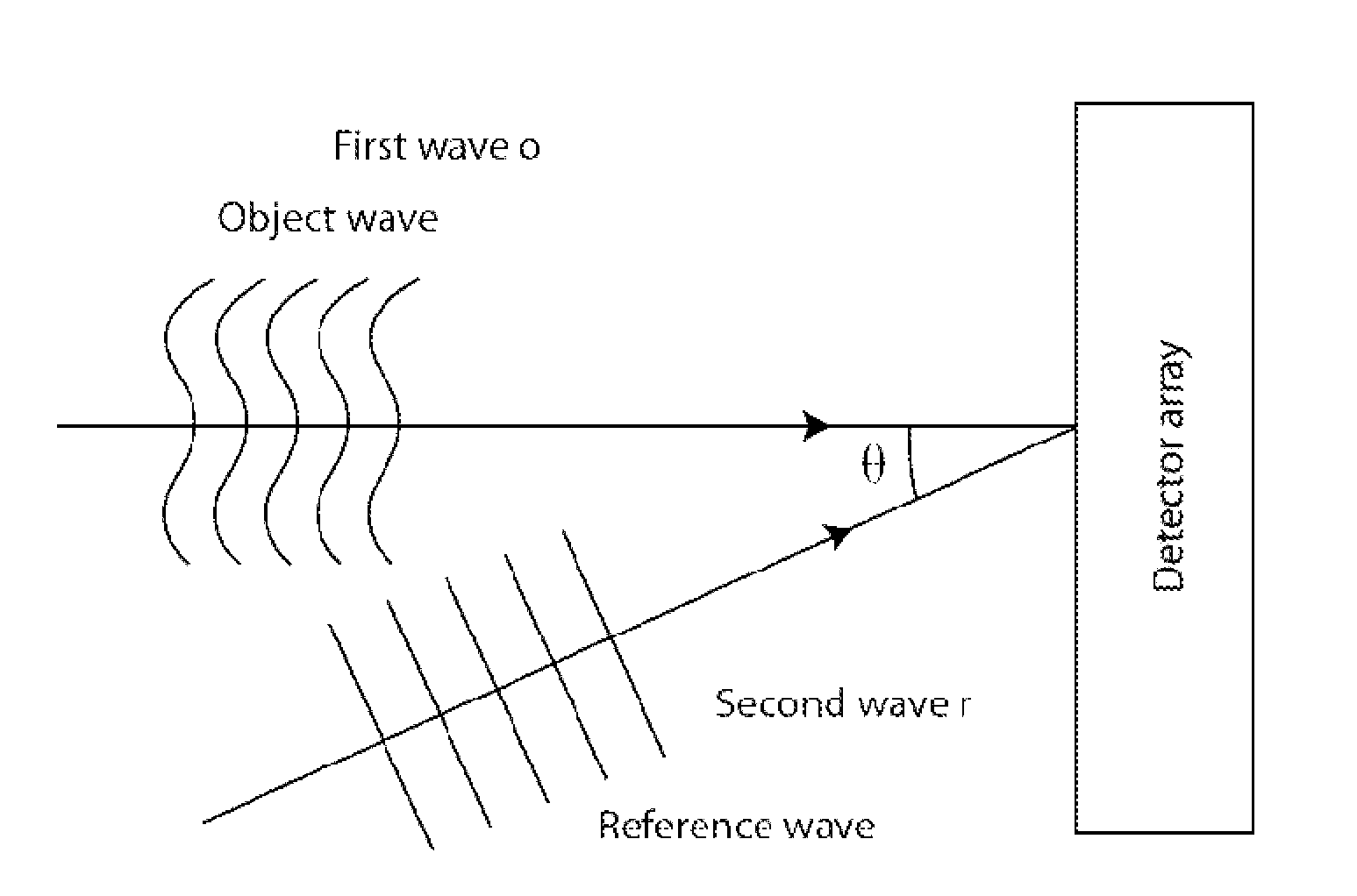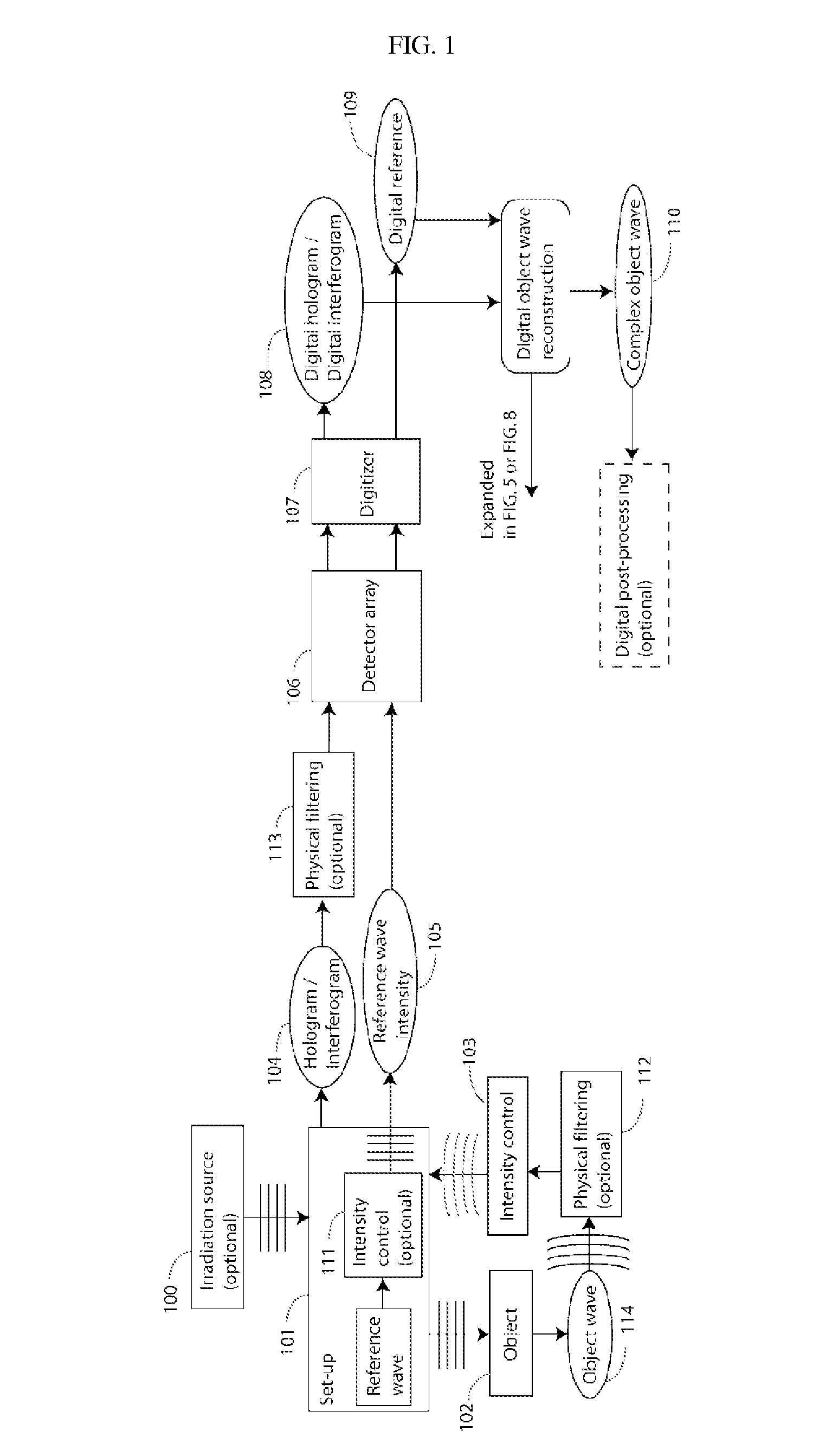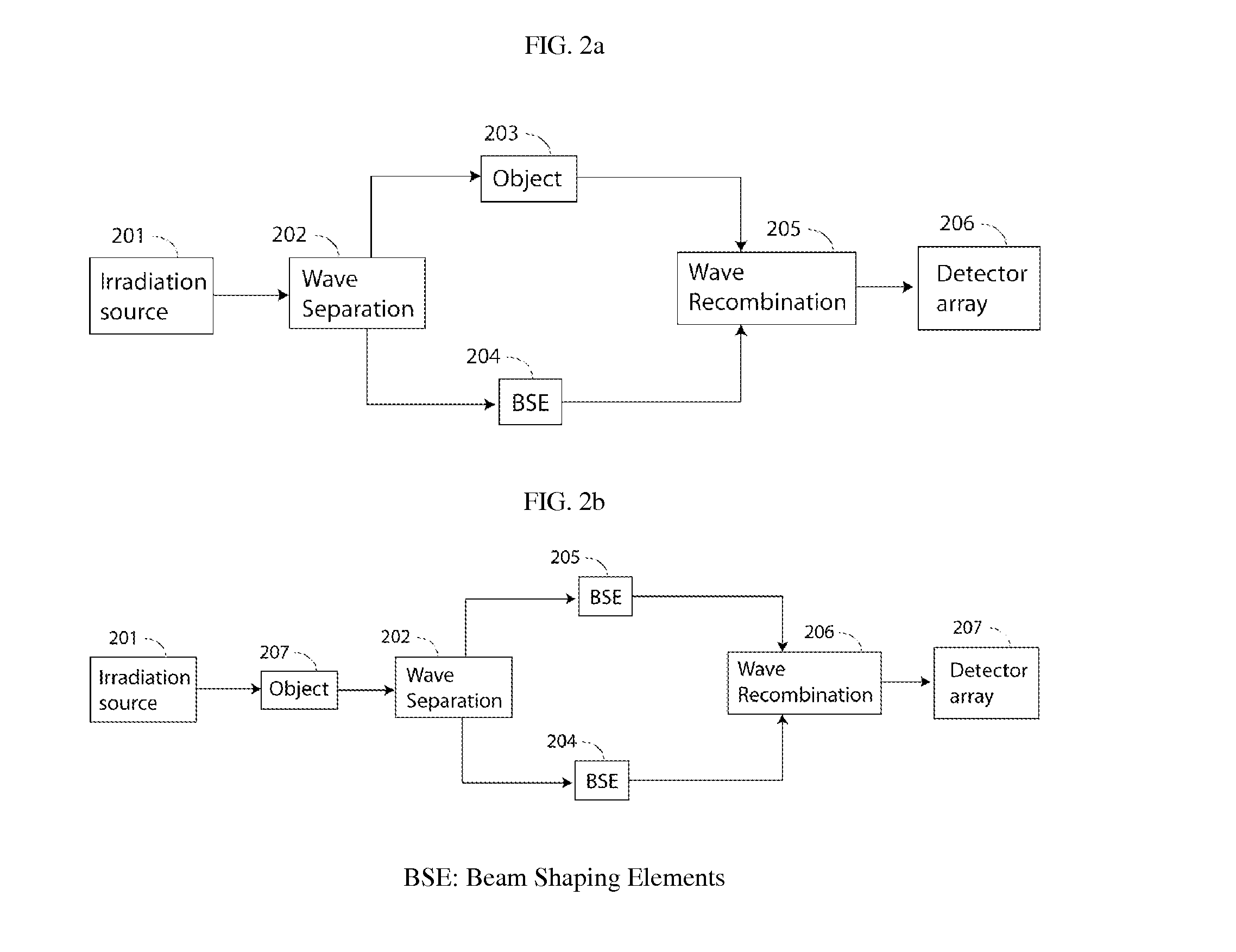Method and apparatus for enhanced spatial bandwidth wavefronts reconstructed from digital interferograms or holograms
- Summary
- Abstract
- Description
- Claims
- Application Information
AI Technical Summary
Benefits of technology
Problems solved by technology
Method used
Image
Examples
second embodiment
[0041]For the first and second embodiment, the interaction of the source wave with the measured sample can be done in two modes: 1) reflection geometry, where the wave o is reflected by the object, giving information about its shape if it is highly reflective, or its internal structure through back-scattering phenomena if it is mainly transparent within the employed spectral range; 2) transmission geometry, where the wave is diffracted by the sample, giving information about its internal structure.
[0042]In a third embodiment, the irradiating source 100 is optional: as for the second embodiment, the wave, said object wave, is conducted to 101 where it creates a hologram 104 by interfering with a reference wave which, in this third embodiment, is also derived from the object wave itself, by using optional beam shaping elements BSE. An independent irradiating source is not necessary and can be considered as confounded with the object: this is the case of optics, if one considers fluore...
third embodiment
[0045]The coherence requirements are diverse: in microscopy, weak coherence is most often enough. The coherence can be restricted both in the temporal and in the spatial domain. The basic rule is that the extent of the coherence both in the temporal and in the spatial domain must be sufficient to provide a contribution of the mutual coherence terms corresponding to the so called “cross terms” in the development of the interference of the object and reference wave, all over the surface of the detector array. In the third embodiment, where optical emitting molecules, fluorophore or luminophores, are considered, an optical filter, interference filter, filter band-stop, Fabry-Pérot interferometers or etalons can be inserted before the interferogram formation, or before the camera, in order to increase the coherence length.
[0046]The hologram is created by the interference between the said “wave” o (object wave), which interacts with the sample 102 and a second wave r or reference wave ge...
PUM
 Login to View More
Login to View More Abstract
Description
Claims
Application Information
 Login to View More
Login to View More - R&D
- Intellectual Property
- Life Sciences
- Materials
- Tech Scout
- Unparalleled Data Quality
- Higher Quality Content
- 60% Fewer Hallucinations
Browse by: Latest US Patents, China's latest patents, Technical Efficacy Thesaurus, Application Domain, Technology Topic, Popular Technical Reports.
© 2025 PatSnap. All rights reserved.Legal|Privacy policy|Modern Slavery Act Transparency Statement|Sitemap|About US| Contact US: help@patsnap.com



